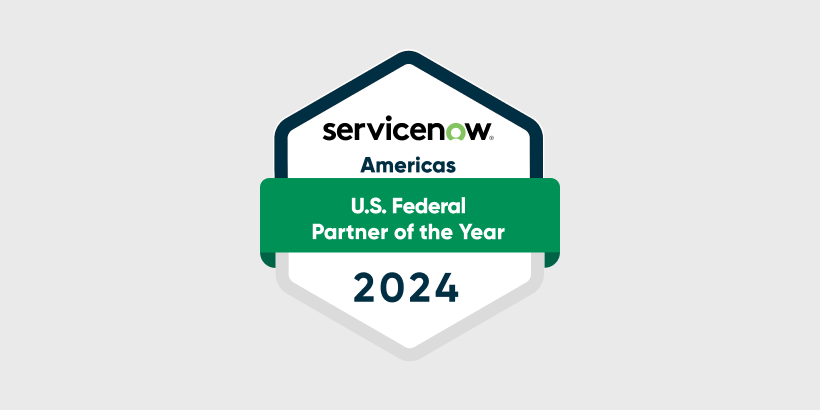Modernizing systems to empower employees
Outdated legacy systems hinder both current employees and potential hires. These systems turn simple tasks into time-sucking rabbit holes.
“HR can sometimes feel like a black hole,” Niakan points out. “You send a request in, and you don’t know where it went. You don’t know how long it’s going to sit there. And when you get a response, you feel lucky. What you don’t see is how incredibly hard the HR team is working to get all of their customer needs accomplished. You don’t know it because there is no visibility into HR.”
By implementing ServiceNow, Intact streamlines workflows and provides real-time visibility. “We’re able to give our employees and leaders access to information that they didn’t have before,” Niakan explains.
For example, during her tenure at the Department of Health and Human Services, Niakan’s team used ServiceNow to create a platform called HR Exchange. This system allowed different HR centers to share candidate certificates between them—a process that was previously manual and siloed. With the old method, hiring managers would receive hundreds of eligible candidates on a list, pick one to hire, and discard the other qualified resumes.
But by making all the resumes keyword searchable, hiring managers from other departments can easily comb through thousands of resumes for other candidates that matched their required qualifications.
“At one point, we had 100,000 resumes available in the database,” Niakan recalls. “I could put in the word ‘epidemiology,’ for example, and it would narrow down to 417 resumes. Then I could add ‘basketball’ and it would narrow down to 26 people.” This new level of visibility allowed managers to efficiently identify qualified candidates across silos, improving hiring outcomes.
Staff can work more efficiently and focus on high-value activities by having critical data readily available. They can automate repetitive tasks using ServiceNow, allowing experienced personnel to dedicate their time to more strategic initiatives. It’s an approach that not only helps retain valuable institutional knowledge but also accommodates the retirement of long-time employees.
The importance of transferring critical institutional knowledge to the next generation has caught the attention of oversight bodies. According to the Office of Personnel Management, failure to transfer this knowledge could compromise a federal agency’s ability to fulfill its mission.
“Agencies must modernize human resources IT infrastructure by upgrading and integrating enterprise IT systems supporting the workforce and increasing the data available to inform management decision-making,” according to the OPM’s 2022 Federal Workforce Priorities Report.
The fear of failure holding us back
Modernizing any system comes with its own set of risks. But when it comes to federal agencies that are accountable for providing essential benefits and services, any failure can have a significantly adverse impact on vulnerable populations.
“These are major systems we are talking about, like the ones that run the food stamp program I worked on at USDA. That’s a system that has to work every day,” says Jonathan Alboum, the Federal CTO at ServiceNow, who previously served as CIO for the U.S. Department of Agriculture. “These systems always have to work, so you don’t have a lot of opportunity to introduce something new that’s going to fail—or that might fail.”
With so much at stake, fear of destabilization breeds deep risk aversion. Yet refusing to evolve also poses dangers. Outdated tools frustrate users and impose limitations. The key is finding a middle path.
“ServiceNow gives you a lot of ability to innovate quickly and rapidly, and, in many cases, ServiceNow is already a key technology in an agency,” Alboum says. “So you can build off of that to implement other aspects of ServiceNow, like low-code applications, very quickly to transport processes.”
By leveraging familiar systems like ServiceNow, change can unfold steadily using the right iterative approach. The process begins with small upgrades that help build trust and confidence, paving the way for more expansive modernization in the future. While transforming massive bureaucracies may require patience, the iterative progress empowers current staff and makes public service more appealing to potential hires.ServiceNow’s connected platform enables the free flow of information across silos. For example, during the COVID-19 pandemic, Niakan was able to provide real-time policy and safety updates to the entire HHS workforce and widespread access to Federal Employee Viewpoint Survey results.
“Managers were able to look at not just their own survey results within their organization down to the work unit level, but they could also make comparisons with other organizations to see what organizations might be doing better in a certain area,” she said.
You need to help people transition through change first
One reason why the pace of modernization is usually slow is that leaders recognize that effective modernization goes beyond technology. Implementing change across massive bureaucratic systems also demands the ability to competently and compassionately address their employees’ fears and resistance.
“Change is scary for a lot of people,” Niakan says. “It’s not just about putting a new system in front of them. When you say to a person, ‘You need to change the way you’re thinking,’ there’s no system in front of them to learn, with buttons to press. It’s more complex than that.”
With a thoughtful, people-focused approach, leaders can overcome resistance by building trust and helping staff understand the “why” behind digital transformations. Though progress takes patience, this mindset shift brings government into the 21st century—where public service is more streamlined, responsive, and fulfilling for users both inside and out.
“I tell employees the stories of changes I’ve gone through, how difficult it is even for me as a change agent,” she says. “When we get through this process and get to the other side, your lives are going to be better, your work is going to be easier, and your customers are going to be happier.”



